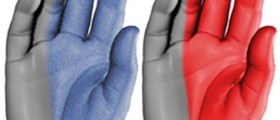
Introduction
Nerve compression problems are pretty much common medicalconditions. They are usually associated with painful sensations and alsodysfunctions in the upper extremities. This usually happens most frequently inthe occupational environments. Carpal tunnel syndrome is a condition which isusually much more known among people, but cubital tunnel syndrome is the mostcommon nerve compression pathology. It is also very high on the list of mostcommon peripheral compression neuropathies. This medical condition can bedescribed as the compression of the ulnar nerve between the two heads of theflexor carpi ulnaris which is located on the outer side of the elbow, commonlyreferred to as the cubital tunnel.
Characteristics
As mentioned earlier, the so called cubital tunnel is on theouter side of the elbow and it is surrounded from both sides by the heads ofthe flexor carpi ulnaris, which is a muscle located there. One head is attachedto the medial epicondyle of the humerus, while the other one comes from themedial aspect of the so called olecranon process. When the two heads jointogether, they form the belly of the flexor carpi ulnaris. As explainedearlier, the ulnar nerve passes between the two heads of the muscle, and whenthe elbow flexes, the space within the cubital tunnel gets decreased by 55%,which greatly increases the chance of nerve compression. If a person suffersfrom the symptoms of cubital tunnel syndrome, the condition usually getsaggravated during the flexions of the elbow and the ulnar nerve. Shifting thepositions of the ulnar nerve may also be held responsible for the presence ofadditional symptoms in the affected region. Cubital tunnel syndrome may betriggered by different factors but the most usual ones include chronic or acutecompression of the elbow. Other common causes of cubital tunnel syndrome may ormay not include mechanical compression of the nerve, or the compression offibrous bands within the muscle, synovial ganglions, bone spurs or excessivecubital valgus. In spite of all that, the most frequent trigger of the cubitaltunnel syndrome is the medical condition known as hypertonicity. Thoracicoutlet syndrome may also increase the sensitivity of the nerve to compression.The most common symptoms of the cubital tunnel syndrome include tinglingsensations, burning sensations, painful sensations, atrophy and weakness. Thecubital tunnel syndrome affects men much more than women. The best treatmentmethod known to man is massage.

















Your thoughts on this
Loading...